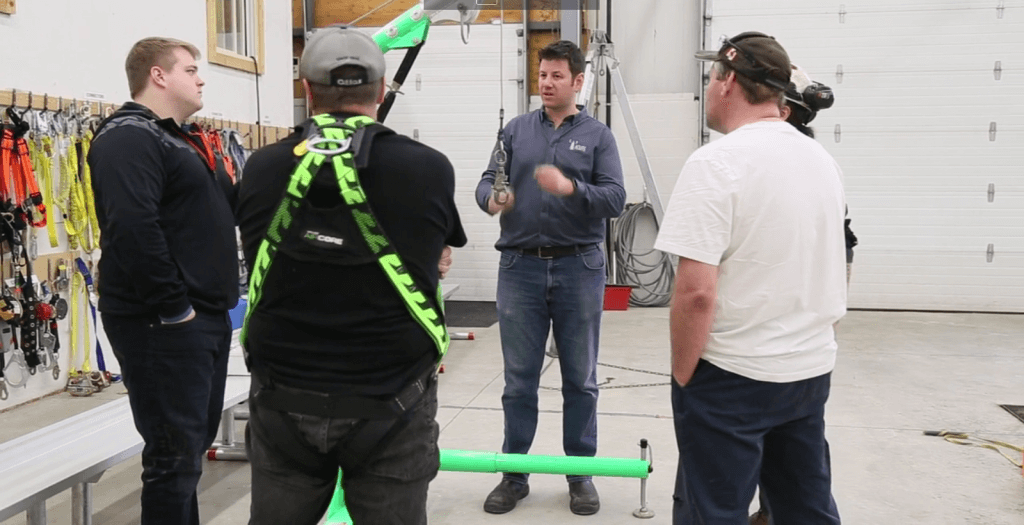A strong safety orientation program for new hires is more than a formality. It sets the tone for your workplace culture, helps prevent costly accidents, and gives employees confidence in their roles from day one. When structured correctly, it balances compliance requirements with practical knowledge, ensuring that every new hire understands not only the “what” but also the “why” of workplace safety.
- Why a Safety Orientation Program For New Hires Matters
- Key Elements of a Safety Orientation Program
- How Long Should a Safety Orientation Take?
- Who Should Deliver the Safety Orientation Program For New Hires?
- Best Practices for an Effective Program
- Benefits Beyond Compliance
At ACUTE, we specialize in customized safety training programs that help businesses protect their employees and meet compliance standards. If you’re looking to improve your safety orientation program or build one from scratch, our experts can design and deliver a solution tailored to your workplace needs.
1. Why a Safety Orientation Program For New Hires Matters
New employees are at the highest risk of workplace injury during their first few months.
A lack of familiarity with hazards, emergency procedures, and company expectations can quickly lead to unsafe practices. A safety orientation program for new hires helps close that knowledge gap before work begins.
The benefits extend well beyond compliance with workplace safety regulations. When new employees feel that their employer prioritizes their safety, it builds trust, improves morale, and encourages longer-term retention.
Employees who understand how to work safely are also more productive and more confident in their roles, which reduces turnover and strengthens overall team performance.
2. Key Elements of a Safety Orientation Program

A well-rounded safety orientation should cover several core areas.
Start by introducing your company’s safety policies and procedures. This section should explain the general rules employees are expected to follow, how safety violations are handled, and what rights and responsibilities they have under workplace regulations. This foundation ensures clarity and accountability from the start.
Next, address workplace hazard awareness. A site walk-through is often the most effective way to introduce employees to the risks specific to your facility. Point out potential hazards such as machinery, chemical storage, or high-traffic areas, and explain the meaning of warning signs, colour codes, and labelling systems.
The program should also include training on personal protective equipment (PPE). Employees need to know which equipment applies to their role, how to properly use it, and when it must be worn. Demonstrations and fit testing are especially valuable to ensure correct and consistent use.
Emergency procedures form another critical component. Employees must know how to respond in the event of a fire, medical emergency, spill, or natural disaster. This training should cover evacuation routes, assembly points, first-aid stations, eyewash stations, and the location of emergency equipment such as fire extinguishers and AEDs.
Finally, tailor the program with job-specific safety training. General guidelines are important, but each role comes with unique risks. Whether it involves lockout/tagout procedures for machinery, ergonomics for office workers, or handling hazardous materials, this section ensures that employees can perform their duties safely.
Throughout the orientation, explain how to report unsafe conditions and incidents. Reinforce that near misses and hazards should always be reported, and emphasize that a strong safety culture relies on open communication.
3. How Long Should a Safety Orientation Take?

The duration of a safety orientation depends largely on the level of risk in your workplace.
For lower-risk environments, such as offices or administrative roles, one to two hours may be sufficient. This allows enough time to review policies, hazards, emergency procedures, and basic PPE requirements.
In higher-risk industries like construction, manufacturing, or laboratories, orientation should extend to a half-day or even a full day. Employees in these settings may require demonstrations, hands-on training, or certification in specific procedures. It is often helpful to spread this information across multiple sessions during the employee’s first week.
Regardless of industry, plan to revisit safety topics regularly. Short refresher sessions throughout the first 90 days—and quarterly after that—help reinforce knowledge and ensure that employees retain what they learned on day one.
4. Who Should Deliver the Safety Orientation Program For New Hires?

The effectiveness of a safety orientation program for new hires depends not only on the content but also on who delivers it.
In many organizations, the safety officer or EHS manager takes the lead, especially for high-risk industries where compliance and technical accuracy are critical. These professionals can provide the necessary depth of expertise while answering technical questions.
Supervisors and team leads also play an important role. Because they oversee day-to-day tasks, they are well-positioned to provide practical, role-specific training and to reinforce expectations within their departments.
Human Resources staff should be included to explain company-wide policies, rights, and documentation. Their involvement ensures that employees understand both the legal requirements and cultural expectations around safety.
The most effective programs often use a combination of these voices. This approach demonstrates that safety is a shared responsibility across the organization, not just the domain of one department.
5. Best Practices for an Effective Program
A safety orientation will be most impactful if it is engaging and practical. Avoid relying solely on lectures or slide presentations. Instead, use a variety of teaching methods—videos, demonstrations, interactive discussions, and hands-on practice. These formats help accommodate different learning styles and increase retention.
Always provide written materials, whether in print or digital format, so employees can revisit the information later. This might include checklists, quick-reference guides, or a safety handbook.
Assess understanding along the way. Simple quizzes, role-playing scenarios, or practical demonstrations give both the trainer and the new hire confidence that the material has been absorbed. Encourage questions at every step and build in opportunities for discussion, rather than simply delivering information one way.
Finally, maintain thorough records of training completion. Documentation ensures compliance and provides a reference in the event of future incidents or audits.
6. Benefits Beyond Compliance

A structured safety orientation program provides more than regulatory protection. It helps reduce the frequency and severity of accidents, which in turn lowers insurance costs and minimizes downtime. Beyond the financial impact, it shows employees that their health and well-being matter, strengthening their loyalty to the organization.
When new hires feel secure and supported, they are more likely to stay with the company long term. This reduces turnover, which saves money on recruitment and training while building a more experienced workforce.
An effective safety orientation program for new hires combines clarity, structure, and engagement. By covering company policies, hazard awareness, PPE, emergency response, and job-specific safety practices, businesses not only prevent incidents but also foster a culture of trust and accountability. The result is a workforce that is safer, more confident, and more committed from day one.
Next Step: Review your current orientation materials and compare them to the framework above. If there are gaps, begin with one improvement—such as adding a site walk-through or a PPE demonstration—and build from there. Even small enhancements can significantly improve safety outcomes.
Don’t Buy Into These Ontario Safety Myths
Building an effective safety orientation program for new hires is one of the smartest investments a company can make. By clearly outlining expectations, teaching employees how to recognize hazards, and providing practical emergency training, you not only prevent incidents but also create a culture where people feel supported and valued from day one.
At the end of the day, safety orientation is about more than compliance—it’s about retention, productivity, and peace of mind for everyone on the job.
ACUTE Environmental & Safety Services offers expert-led training designed to meet your industry’s specific needs. From hazard awareness to PPE use and emergency response, our team ensures your employees start strong and stay safe.
What Our Customers Are Saying…
Acute is recognized and respected as a people organization and they have been doing it right for a long time.
Acute has been a staple in supporting my companies over the years and have always delivered quality amd dependable service. Training programs are top shelf and a great facility for practical application. couldn’t recomend them more. keep up the great work folks.
We were referred to ACUTE on behalf of our employer for an n95 mask fitting – the staff here are professional, personable, and informative.
I’d come back here for any safety-related training in a heartbeat.

